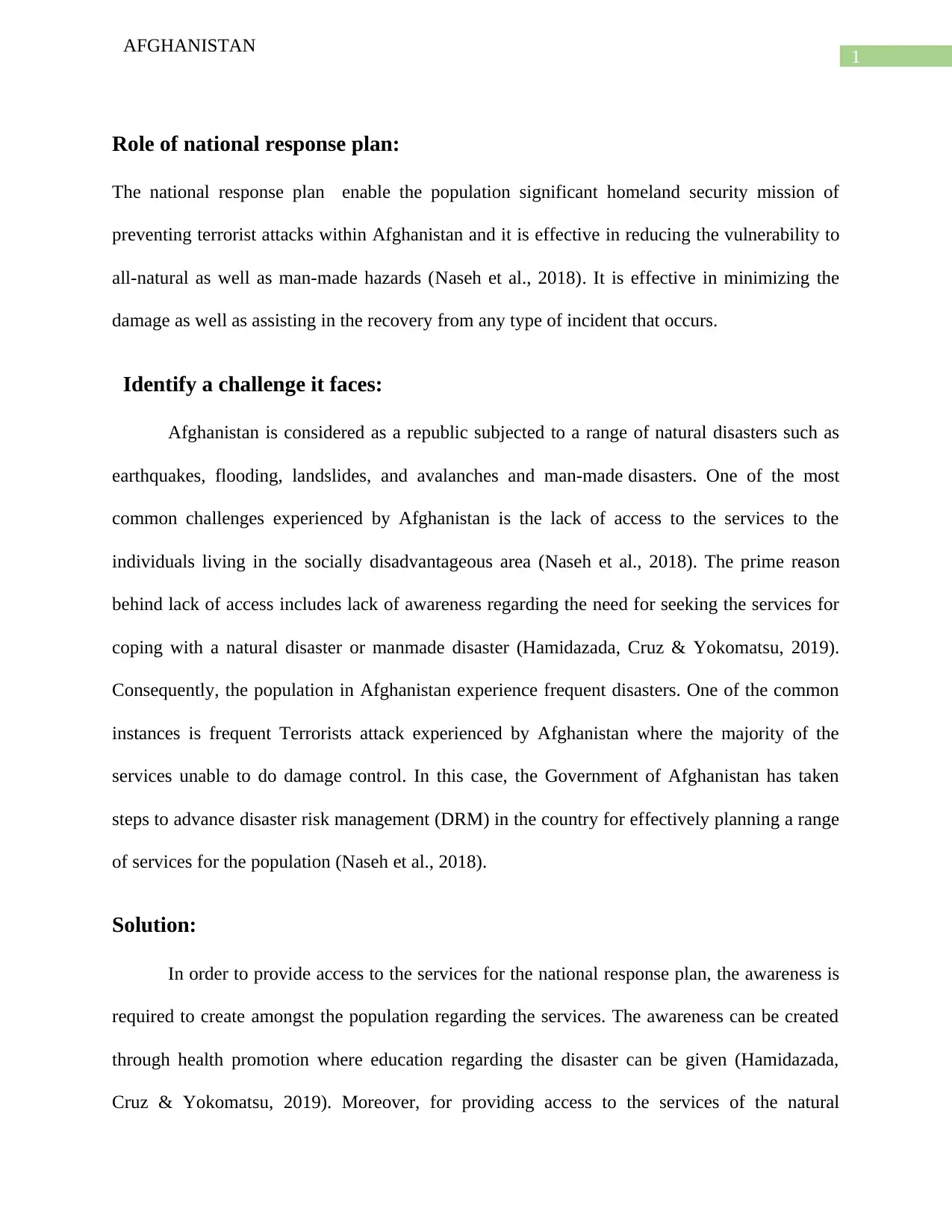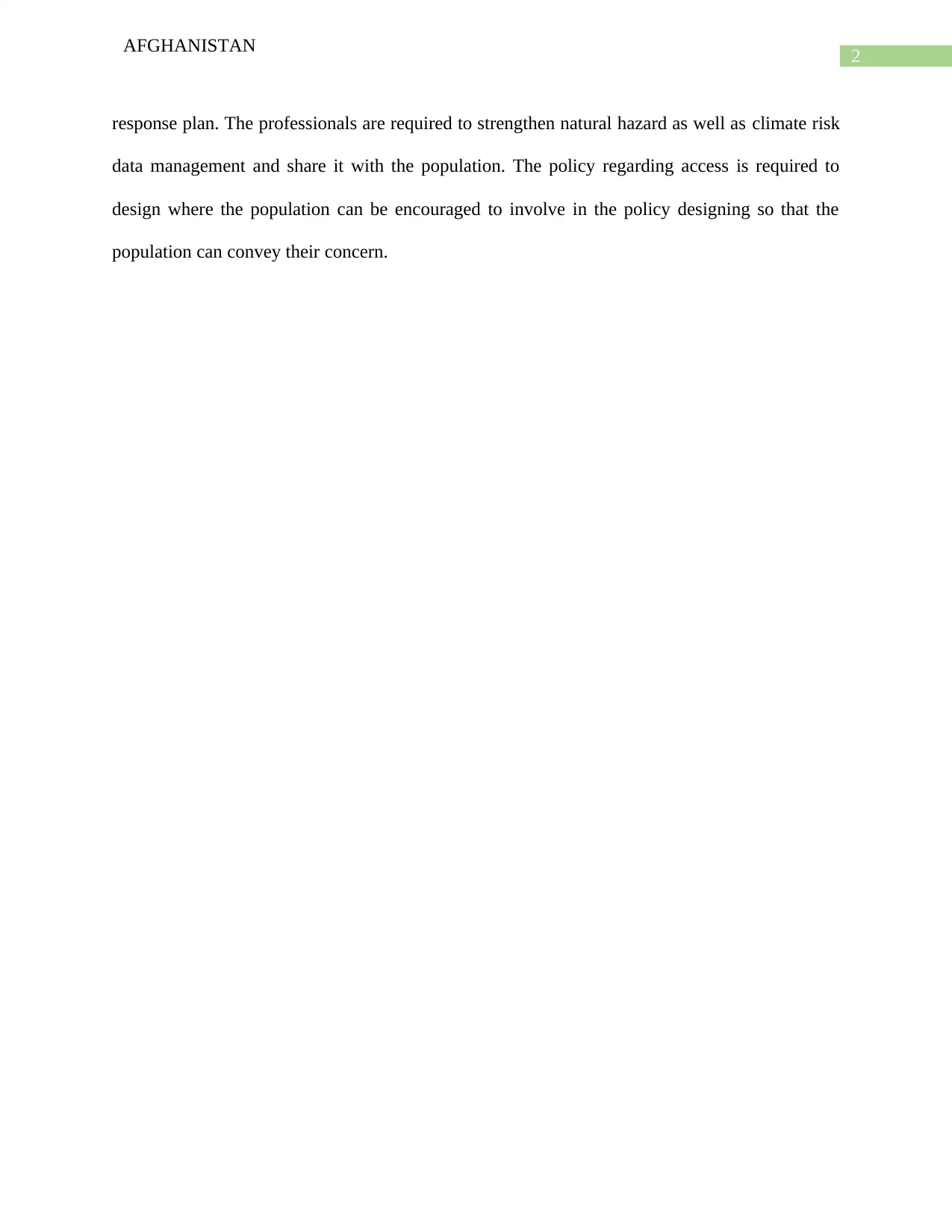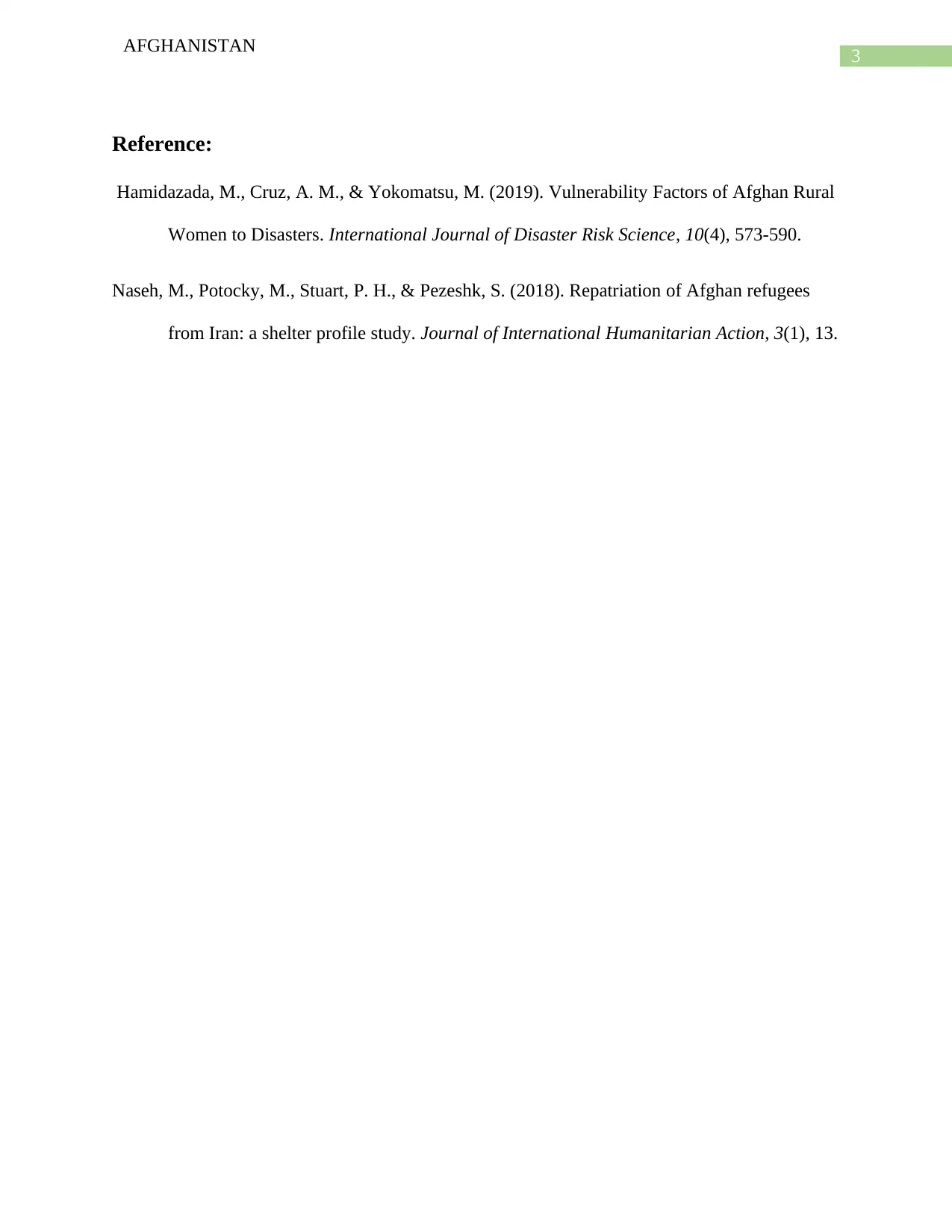Challenges and Solutions for Afghanistan's National Response Plan
VerifiedAdded on 2022/08/14
|4
|476
|13
Report
AI Summary
This report focuses on the National Response Plan in Afghanistan, highlighting the critical role it plays in homeland security by mitigating the impact of natural and man-made disasters. The report identifies a key challenge: limited access to services, particularly in socially disadvantaged areas, often exacerbated by a lack of awareness. The assignment provides solutions to address this challenge, emphasizing the need for health promotion to increase awareness and the importance of strengthening data management related to natural hazards and climate risks. Additionally, the report advocates for policy design that encourages community involvement to ensure that the concerns of the population are addressed effectively. The report highlights the importance of the government's initiatives to improve disaster risk management in Afghanistan.
1 out of 4











![[object Object]](/_next/static/media/star-bottom.7253800d.svg)